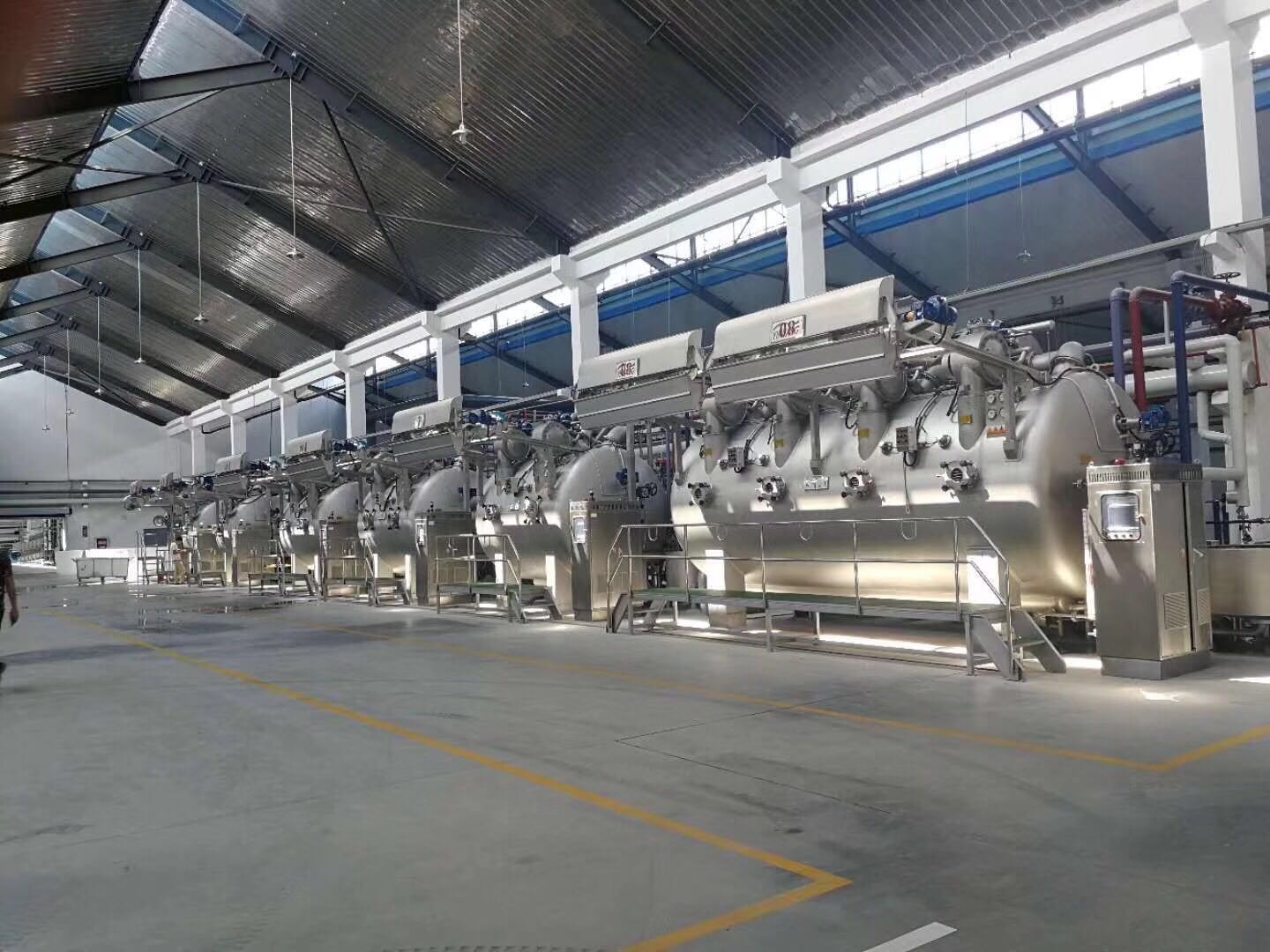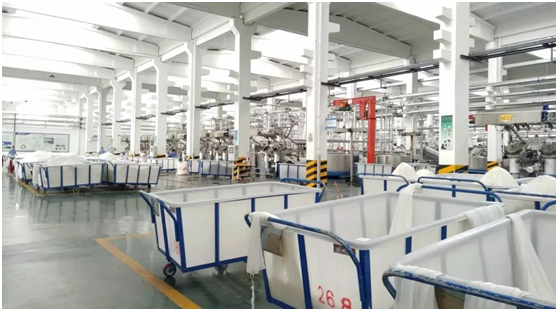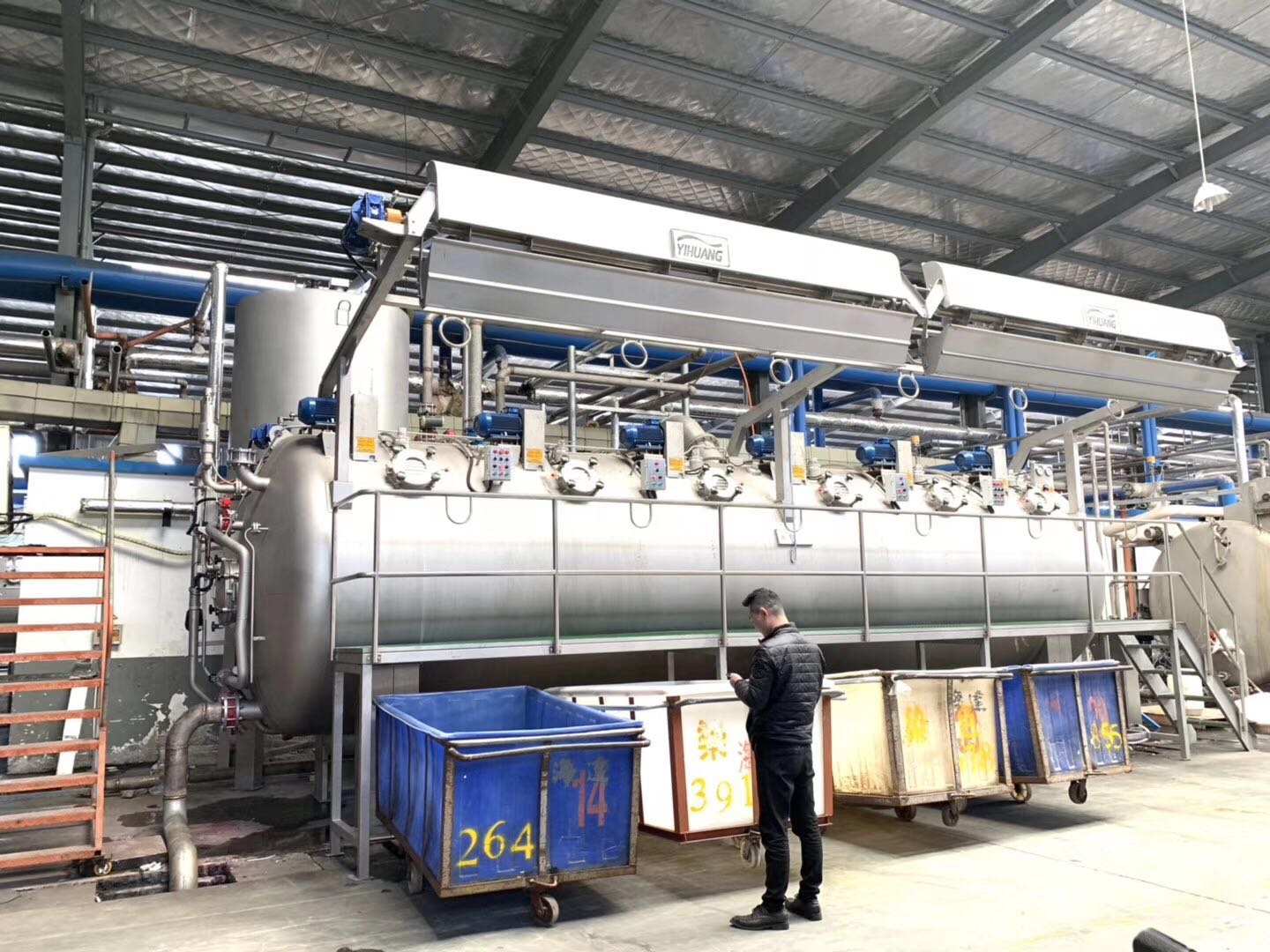
2019-05-30

The dyeing fabric is different and the shades are different. According to the color difference, it is divided into the same batch of color difference and the same fabric color difference.
The reasons causing:
1. The grey fabric
2. The dyestuff is unevenly in the fabric
2.1 fabric factor (sizing)
2.2 Absorbing factor (liquid absorption, penetration unevenly)
2.3 Pre-drying factor (drying unevenly)
3. The dyestuff fixation degree on the fabric is different: improper fixation control
4. Improper dyestuff selection
5. Dyestuff color shades variation
5.1 Pre-dyeing (half product whiteness, PH value)
5.2 Dyeing (excessive temperature)
5.3 Post-dyeing (processes and auxiliary in the finishing)
5.4 Soaping factor
6. The operation reasons: improper feeding and the fabric is not uniform
Solutions:
1. Strengthen the grey fabric inspection to ensure the quality
2. Use suitable equipment and uniform padder or improve the uniformity of padder
3. Strengthen the management of bleaching and provide qualified semi-products
3.1 Use the same grey fabric in the same batch
3.2 The fabric should evenly dried before dyeing
3.3 Uniform dyeing effect before dyeing
3.4 Mercerized fabric PH value control neutral
4. Selecting suitable dyestuff (similar dyeing curve and enhance dyestuff test)
5. Adding level auxiliary when dyeing
6. The dyeing process should be reasonable
7. Pay attention to post-dyeing processing, washing and soaping should be sufficient
8. Selecting finishing auxiliary should be cautious and the processing conditions should be consistent.

The color of dyeing fabric does not match the specified sample color and exceeds the allowable color difference standard.
The reasons of causing:
1. Improper dyeing process, different production conditions of sample and mass production
2. Review color sample light source is not uniform
3. Unreasonable dyeing planning
4. Poor management of dyestuff and auxiliary
5. Improper dyeing process conditions and operation
5.1 Semi-products do not meet the requirements
5.2 Dyeing process use hard water
5.3 Dyestuff amount is wrong
5.4 Dyeing process control is not strict
Solutions
1. The fabric specifications of sample and mass productions should be the same and the semi-finished fabric should have the same process.
2. The roll pressure should be fixed during pad-dyed and the liquor ratio should be consistent when dip-dyed.
3. The dyeing process conditions should be the same, dyestuff, auxiliary, temperature, liquor ratio etc.
4. The dyestuff should be screened and do not use color-changing dyestuff
5. Using standard light source or computer color measuring instrument
6. Arrange the dyeing production plan reasonably
The fabric is uneven and has irregular patches.
The reasons of coursing:
1. The uniformity degree of fiber raw materials and fabric organization
2. The pre-processing fabric uniformity degree
3. Dyeing leveling transferability is poor
4. The temperature rise and fall is too fast
5. Drying speed is too fast
Solutions:
1. Strengthen the grey fabric inspection
2. According to the properties of the fiber, using the good leveling auxiliary
3. Adding leveling auxiliary
4. The dyestuff should meet the fineness requirements
5. The dyeing process should reasonable and the strictly controlled
6. Strengthen equipment inspection and debugging.
The color stains are deeper than the fabric color. The common occurrences are in the color series of disperse brilliant blue, disperse turquoise, disperse red jade etc. Due to the particularity of the dyestuff, the dyestuff does not dissolve and the temperature rises rapidly which causes color stains.
The reasons of causing:
1. Aggregation of dyestuff: the deposition of dyestuff on the fabric, including whitening agent aggregates.
2. Dyestuff tarification: dyestuff particles and surfactants condense at high temperature
2.1 insufficient washing during pre-processing
2.2 using non-ionic or anionic auxiliaries with the cloud point is lower than the dyeing temperature and insufficient washing
2.3 The surfactant is poorly dissolved, improper operation or colored viscous material formed on the dyestuff liquid
Solutions:
1. Strengthen fabric pre-processing
2. Strictly prevent dyestuff condensation, using less cohesive dyestuff and using good performance leveling agents or dispersant

The reasons of causing:
There are many reasons caused color point, unripe cotton is not colored or solids such soda ash are stained on the fabric.
1. Choosing improper dyestuff, the dyestuff particles are too large and make agglomerated
2. The dyestuff is dissolved insufficient, the undissolved dyestuff enter the dye solution and is stained on the fabric
3. The dyeing equipment is not clean, the tar of the dyeing chamber is dropped to cause color points
4. Poor water quality, easy to cause the dyestuff to coagulate
5. Improper processing conditions, colored fluff or insufficient singeing
6. Softeners are not fully emulsified, improper use of salt and alkalinized materials
Solutions:
1. Increasing the number of dyestuff grinding and increasing the amount of dispersant
2. Using soft water and adding solvent and control the water temperature
3. When changing the color, do the machine cleaning well
4. Control the process conditions well, such as singeing temperature to avoid melt
5. Choosing the stable softener
 ADD:Room 2317, Zhongxin Building, No.268, Baogang Avenue, Guangzhou, China
ADD:Room 2317, Zhongxin Building, No.268, Baogang Avenue, Guangzhou, China  TEL : 0086-20-34229974
TEL : 0086-20-34229974  E-Mail: eric@gzrunhao.net
E-Mail: eric@gzrunhao.net